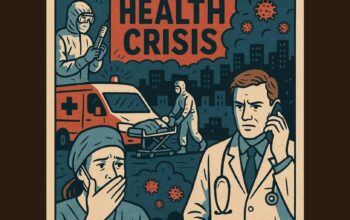by Stacy M. Brown
A study published in the Journal of the American Academy of Dermatology (JAAD) found that Black men face a significantly higher risk of death from melanoma compared to other racial groups.
The findings, released this week, shed new light on the urgent need to address the racial disparities in melanoma outcomes.
The study analyzed a vast dataset of 205,125 male patients diagnosed with cutaneous invasive melanoma between 2004 and 2018, sourced from the National Cancer Database.
Researchers said they uncovered distressing statistics.
Among the various racial groups studied, Black men exhibited the lowest five-year survival rate at a mere 51.7%.
In contrast, white men showed the highest survival rate at 75.1%.
Although white men are more prone to developing melanoma, the study emphasized that Black individuals face a 26% higher risk of death than their white counterparts.
According to the National Library of Medicine, cutaneous melanoma, the most aggressive and fatal form of skin cancer originating from pigment-producing cells, poses a grave threat to individuals across all races.
While gender and race influence survival rates among people diagnosed with cutaneous melanoma, the specific impact of race among men remained unclear until this study.
The researchers said they sought to fill the knowledge gap and shed light on race’s role in men’s melanoma outcomes.
Although the study did not pinpoint the exact factors contributing to the increased mortality risk for Black men with melanoma, it did reveal that they were less likely to have private insurance coverage.
Additionally, men were generally less inclined to seek medical care than women, potentially leading to delayed diagnoses and treatment.
Ashley Wysong, the chair of the Department of Dermatology at the University of Nebraska Medical Center and a co-author of the study, emphasized that even after accounting for later stages of diagnosis, men still exhibited worse overall survival rates than women with melanoma.
Wysong said the finding suggests the presence of unmeasured social, genetic, tumor-specific, and potentially biological factors, such as hormonal influences and variations in immune system responses to melanoma tumors.
Additionally, the study highlighted the challenges individuals with darker skin tones face, as they often mistake melanoma for other skin conditions, leading to delays in seeking care and receiving definitive treatment.
The JAAD study also found melanoma-related disparities among Black women, who demonstrated the highest percentage of tumors in the lower extremities, encompassing the legs, ankles, and feet.
Wysong strongly recommended that individuals consult a board-certified dermatologist if they notice any new, bleeding, or non-healing skin lesions.
She expressed hope that this research will serve as a foundation for future studies to determine the root causes of the survival rate gaps and develop strategies to bridge these disparities.
“We hope our research can lay the foundation for future studies to determine why there’s such a gap in survival rates and to make headway to reduce these survival rate gaps,” she told NBC News.
Source: Published without changes from Washington Informer Newspaper




